20 MASTERPIECES OF LATIN SOUL
By Greg Burgess (with an occasional assist from Sir Shambling)
The Hispanic influence on rhythm and blues and soul music has rarely been documented. It is more evident in the music of English and French speaking Caribbean and a little consideration beyond the obvious gradually revealed an expanding list of records that paid tribute to the rhythms of el barrio but which were infused with the sound of the Afro- American community. (Not of course, that these are exclusive ethnic groups).
It would need a major treatise such as that of Stephen Loza’s ‘Barrio Rhythm’ to examine all the factors within this whirlpool of cultural cross pollination so this article sets its sights primarily on the output of New York and Los Angeles with a toe in the waters of Texas. We will begin this brief review on the West Coast.
The West Coast
During the 1960’s the young Chicanos of Los Angeles’ Eastside had in effect created their own style of music. The ‘Eastside Sound’ was vibrant mix of rhythm and blues, soul, funk, rock and salsa often melded with traditional Mexican instrumentation. The romantic ballad played an important part in Mexican culture and the young Chicanos of the 1960’s continued this tradition elevating many a soul ballad to prominence within the Eastside scene. Soul ballad singers such as: Brenton Wood, Don Juan (of the Larks fame) and the Fuller Brothers had strong followings amongst the Low Riders although special deference was reserved for Chicanos who were perfecting the style. Malo is a band that originated up the coast in San Francisco and is one of the great survivors still performing today. Their sound is predominately Latin Rock and outside the scope of this article yet in keeping with the tradition of Chicano soul ballads each album contains one or two soulful ballads.
 A night club called the Rhythm Room in Fullerton which was owned by record producer Billy Cardenas and Eddie Davis also regularly featured bands from the barrios. Later Davis used the club as a rehearsal room and recording studio for his various record labels. Amongst the bands that cut records with Davis were the Six Pac, the Premiers, Tierra, the Blendells and El Chicano.
A night club called the Rhythm Room in Fullerton which was owned by record producer Billy Cardenas and Eddie Davis also regularly featured bands from the barrios. Later Davis used the club as a rehearsal room and recording studio for his various record labels. Amongst the bands that cut records with Davis were the Six Pac, the Premiers, Tierra, the Blendells and El Chicano.
It was characteristic of many of these Chicano bands that they were self contained, performing music that was as much inspired by jazz and guitar based rock music as it was R&B and soul. Tierra were usually associated with an R&B sound and excelled on smooth soul ballads such as their cover of Tom Bell and William Hart’s ‘La,La, Means I Love You’. Whereas most of the bands I have mentioned had mainly Hispanic origins the influence of el barrio was inevitably felt elsewhere within the dynamic West Coast musical scene of the 60s and 70s and this included some R&B bands. War were largely Afro-American in composition but one with a discernable Latin sound.
New York & Spanish Harlem
At about the same time as young Chicanos were creating records heavily influenced by R&B their Afro-Puerto Rican, Dominican and Cuban cousins in New York’s Spanish Harlem were adapting the various sounds they found around them to create a style that is often called ‘Latin Soul’. It’s a broad umbrella of a term that encompasses a breath of Latin styles including: bugalu (boogaloo), shingaling, mambo, salsa and by the mid 70’s Latin disco. Latin Soul drew heavily from R&B and soul music with much of the output aimed at the dance floor. It’s got to be said that a lot of this music has fared about as well as a pigeon that flies into a cage of sparrow hawks but as with all genres it produced its fair share of excellence. Anyone familiar with Piri Thomas’ autobiography ‘Down These Mean Streets’ will have a picture of Spanish Harlem as a warm, vibrant place with an underbelly of violence and gang warfare. It’s an exuberant and politically savvy place Thomas is a Moreno, that is a black Puerto Rican and he runs with the gangs finally ending up in Sing-Sing prison for killing a policeman.
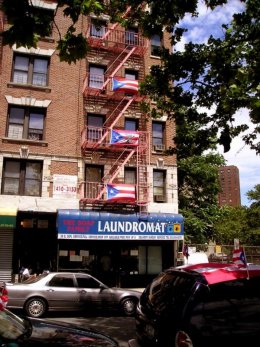 Twenty years later or so two of the greatest of New York’s Afro-Puerto Rican /Cuban stars were similar imprisoned be it for lesser offences. Joe Bataan and Ralfi Pagan under the auspices of Jerry Masucci’s Fania records were to become arguably the two biggest crossover Latin stars of the period.
Twenty years later or so two of the greatest of New York’s Afro-Puerto Rican /Cuban stars were similar imprisoned be it for lesser offences. Joe Bataan and Ralfi Pagan under the auspices of Jerry Masucci’s Fania records were to become arguably the two biggest crossover Latin stars of the period.
Bugalu swept through Harlem in the mid- sixties. The New York Times rather grandiosely credited bugalu for bringing together ’the Latin People and the Black people’ and it spread rapidly through New York’s nightclubs causing a veritable stampede of labels issuing some decidedly dodgy bugalu and shing-a-ling labours. It is little wonder listening to some of these monotonous, repetitive efforts that the style was heavily criticised by the likes of the salsa greats such as Tito Puente. One of the better and most successful bugalulabourswas Jimmy Castor’s ‘Hey Leroy, Your Mama’s Callin’ You’ which at its zenith in late 1966 was selling 250.000 copies a week and receiving praise from the New York Times in the same article as the hyperbole already mentioned. The subsequent album on Smash with sleeve notes in English and Spanish was a clear attempt to aim this Latin based sound at an Afro-American audience and commercially it worked. According to Castor the neighbourhood of his childhood was mainly Dominican, Puerto Rican and Afro-American so it was natural for him to know and use latin rhythms. Jimmy Castor’s album is a decidedly odd batch of mainly instrumentals including a bizarre version of that latin classic ‘Winchester Cathedral’. The craze had petered out by 1970 but not before many a soul artist had cut a bugalutrack.
A far better example of how latin and soul could be melded together is the Lebron Brothers ‘Brooklyn Bums’ LP on Cotique. The production duties are provided by Johnny Colon who provides a soul edge to the boogaloo and salsa rhythms. Colon was perhaps the most successful exponent of the Latin-Soul sound, a style he had perfected by 1976 when he released his ‘Soul & Latin’ LP on Cotique. Ray ‘Mr Hard Hands’ Barretto is another artist who regularly crosses over to the soul market as can be heard on the soul classic’ Which Part of Heaven Do You Come From’ and on ‘Soul Drummers’ a classic example of R&B influenced Latin music.
 In common with ghettos all over the States, the barrios of Harlem and Lower East Sidewere turbulent places in the late 60’s. In the summer of 1967 the barrios of Spanish Harlem poured forth their frustrations at the cultural, social and racial mores of the time and rioted. In the wake of their demands came forth an outpouring of creative and artistic endeavour. Some artists assuaged what Puente called ’Americanisms’ and turned in particular towards Cuba for inspiration to make many fine records that are out of the scope of this article. Yet the influence of soul and R&B remains evident in the work of many including: Joe Cuba, Harlem River Drive, the late Louis Ramirez, Ray ‘Mr Hard Hands’ Barretto and Tito Ramos and his TnT Band. Tito Ramos’ was also a significant figure in the movement. His Cotique album ‘Where My Head is At’ also attempted to tackle some tough social issues including child abuse on ‘I’m Not Too Young To Understand’.
In common with ghettos all over the States, the barrios of Harlem and Lower East Sidewere turbulent places in the late 60’s. In the summer of 1967 the barrios of Spanish Harlem poured forth their frustrations at the cultural, social and racial mores of the time and rioted. In the wake of their demands came forth an outpouring of creative and artistic endeavour. Some artists assuaged what Puente called ’Americanisms’ and turned in particular towards Cuba for inspiration to make many fine records that are out of the scope of this article. Yet the influence of soul and R&B remains evident in the work of many including: Joe Cuba, Harlem River Drive, the late Louis Ramirez, Ray ‘Mr Hard Hands’ Barretto and Tito Ramos and his TnT Band. Tito Ramos’ was also a significant figure in the movement. His Cotique album ‘Where My Head is At’ also attempted to tackle some tough social issues including child abuse on ‘I’m Not Too Young To Understand’.
This lightening jolt through the ‘Soul of The Barrio’ will, I hope, tempt the reader into exploring the relationship between soul music, R&B and the various latin rhythms that melded together in the 60’s and 70’s . Much of the music from the barrios of Los Angeles and New York is now being rediscovered by a new generation far beyond its Hispanic beginnings. As a consequence most the artists and recordings mentioned in this article are now available on a silver disc.
The Tracks
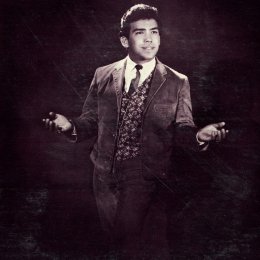 Sunny (Ozuna) & the Sunliners
Sunny (Ozuna) & the Sunliners
![]() Smile Now, Cry Later ~ Key-Loc 1002
Smile Now, Cry Later ~ Key-Loc 1002
Sunny Ozuna has been a major figure in the so called Tex-Mex Movement concentrated in the Lone Star State. His formative years were based in San Antonio in Texas and he has spent most of his recording career in his home city or in Houston where he has cut the majority of his recordings. His initial hit was a cover of a Willie G labour ‘Talk To Me’ as part of the Sunglows but it has been as front man for the Sunliners (formerly the Villanueva brothers Jesse, Oscar & Ray) that he has found fame. Sunny & The Sunliners acted as session musicians for producers such as Huey Meux and Skipper Frazier Lee at Ovide Records in the 60s. They backed Archie Bell and the Drells on their first records including the anti Vietnam record ‘Soldiers Prayer 1967’. In 1966 they had a big hit in their own right with ‘Smile Now Cry Later’ which quickly became something of an anthem for Chicanos on the West Coast. Sunny is equally happy in English as he is in Spanish and is something of a totem amongst Tex-Mex people in his home state where he still performs and resides. This is a fondly remembered ballad from 1963 that typifies the Chicano love of a slow romantic song. The record which was cut in Houston is a gentle affair with close harmonies. It proved to be one of the most popular tracks with the Low Rider aficionados in Los Angeles and remains in demand today.
 Benitez & Nebula
Benitez & Nebula
![]() I’m So Sad ~ Vaya
I’m So Sad ~ Vaya
A track that first appeared on an album ‘Night Life’ in 1976. Since Vaya was another label owned by Fania proprietor Jerry Masucci it is safe to assume that this was cut in New York with Louie Ramirez on production duties. A dead slow ballad with mournful vocals it could have died a death were it not for the fabulous injection of a Santana like guitar solo that closes the track too prematurely for some - including me.
 TnT Band
TnT Band
![]() The Meditation ~ Cotique LP CS 1034
The Meditation ~ Cotique LP CS 1034
Tito (Ramos) and Tony (Rojas) cut a bugalu recording at the height of the craze that has stood the test of time. Could it also be the first record to sample since it borrows extensively from Archie Bell & the Drells ‘Tighten Up’ and James Brown’s ‘Cold Sweat’? Add a little mix of latin percussion and you have a potent melting pot of latin-soul. This is for the dance floor and huge in New York clubs in 1969. Their ‘Meditation’ album on Cotique was an eclectic mix of latin percussion and soul rhythms. It also contains their hit from the previous year ‘Mr Slick’.
 Little Ray
Little Ray
![]() I (Who Have Nothing) ~ Atco 45 – 6355
I (Who Have Nothing) ~ Atco 45 – 6355
One the great singers who emerged at the time is Little Ray (Ramón Jimenez). Born in Delano, a rural town in southern California Lil’Ray arrived in Los Angeles before his sixteenth birthday to work with Johnny Otis. His dynamic stage performances quickly established a strong following amongst young Chicanos. In 1965, after a spell with the Thee Midnighters, he struck gold with a cover of Ben E King’s classic ‘I Who Have Nothing’. It’s a gem of a soul record, a smouldering, mellow dramatic ballad complete with a mariachi horn entrée.
 Two Tons of Fun (featuring Willie G)
Two Tons of Fun (featuring Willie G)
![]() Brown & Beautiful ~ Gordo 706
Brown & Beautiful ~ Gordo 706
Thee Midnighters were also the one time home of another fine Chicano singer, Willie G (Willie Garcia). His soulful voice was put to good effect in late 1969. As the Two Tons of Love (Dos Chicanos Mas) he cut the mid tempo ‘Brown & Beautiful’ for Eddie Davis’ Gordo label in 1969. A severe drug habit curtailed his spell in another important Chicano group Malo and he left the music business around1980 retiring into a church ministry for most of the intervening time. The new millennium saw him back in the studio with new intent and a fine album which included the excellent ‘Open The Door To Your Heart”.
 War
War
![]() Cinco de Mayo ~ LAX 02120
Cinco de Mayo ~ LAX 02120
The defining moment in the History of War was 1972 with the release of the seminal ‘The World is A Ghetto’ album. Lonnie Jordan’s band with their blend of Jazz, R&B, soul, funk and Latin beats made them one of the most successful aggregations of the time. They were equally happy dealing with gritty social messages as they were with a love song. They strongly identified themselves with the Low Rider culture cutting tracks with titles such as ‘Low Rider’ ‘Cisco Kid’ and ‘Cinco De Mayo’. War were one of the most successful R&B combos of the period and frequently used latin rhythms within the sound. ‘Cinco de mayo’ has a highly percussive latin rhythm driven by B B Dickerson’s bass lines. A record for playing loud as you moved down the boulevard in your customised Cadillac .
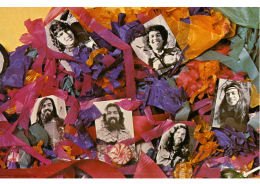 El Chicano
El Chicano
![]() Viva Tirado ~ Gordo 703
Viva Tirado ~ Gordo 703
Under the guidance of Eddie Davis, El Chicano cut a number of albums at the turn of the 70s. The Latin rhythms tended towards the jazzier end of the spectrum with the addition of a smooth romantic soul ballad. The popular ‘Viva Tirado’ is a well known masterpiece of latin jazz styling. Cut in Hollywood in 1970 it proved to be El Chicano’s defining moment. It comes complete with some delicious jazzy guitar ala George Benson melded together with a sympathetic Hammond Organ lead all underpinned with a dash of a strong baseline. This is one for the musicians out there to particularly enjoy. The song is an instrumental tribute to Jose Ramon Tirado, a Mexican bullfighter who famously refused to kill the bull he was fighting.
 Ray Barretto
Ray Barretto
![]() Soul Drummers ~ Fania LP 00410 ‘From the Beginning’
Soul Drummers ~ Fania LP 00410 ‘From the Beginning’
‘Soul Drummers’ first appeared in 1968 on an album called ‘Acid’. Mr Hard Hands is at the top of his form with a congo led blaster backed by Orestes Vilato’s sympathetic timbales on this mainly instrumental bugalu masterpiece. A perfect example of the way R&B and latin can intermingle to great effect.
 Lebron Brothers Orchestra
Lebron Brothers Orchestra
![]() You’ve Lost That Loving Feeling ~ Cotique LP CS – 1015
You’ve Lost That Loving Feeling ~ Cotique LP CS – 1015
The Lebron Brothers are one of the greatest purveyors of latin music favouring salsa in particular but often laying down ganguano, latin soul and bugulu. This version of the Righteous Brothers favourite has a slowed down salsa rhythm and maintains the essential tension between the two male leads.
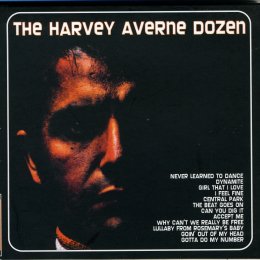 The Harvey Averne Dozen
The Harvey Averne Dozen
![]() Never Learned To Dance ~ Fania LP
Never Learned To Dance ~ Fania LP
Averne was originally an accordionist who switched to vibes when he played with Larry Harlow. He was not of Hispanic origin but in the cultural mix of New York it was latin influences that predominated in his music. This is the title track from a decidedly mixed bag of a semaphore LP for Fania. It’s a crazy ‘in your face’ boogaloo number that remains in demand since its 1971 appearance.
 Johnny Colon
Johnny Colon
![]() You Gotta Love Me ~ Cotique LP CS – 1087
You Gotta Love Me ~ Cotique LP CS – 1087
If there is a more joyous celebration of sex I’ve yet to hear it. A glorious bass led groove is soon joined by congos, timbales and horns aplenty with Johnny strong vocal driving the whole thing along. A record aimed at the disco but also one that is great for the bedroom. Be careful though as its nearly seven minutes long.
 Joe Bataan
Joe Bataan
![]() La Bottela ~ Salsoul SS8701
La Bottela ~ Salsoul SS8701
Joe Bataan (born Bataan Nitollano) is of Afro-Filipino ancestry and was raised in a bi lingual home in the Spanish Harlem District of New York and he emerged from his five year sentence determined to fulfil his dream of merging R&B and Latin. It’s not an exaggeration to say that Joe Bataan and the Latin swingers raised the standards for Latin Music with a series of albums ‘Gypsy Woman’, ‘Subway Joe’, ‘Saint Latin’s Day Massacre’ & ‘Riot’ that were benchmarks of quality. They combine to great effect the urban rhythms of R&B and soul with the el barriorhythms of Cuba and Puerto Rico and have earned Joe Bataan the title of the ‘King of Latin R&B’. After the ‘Saint Latin’s Day Massacre’ LP release in 1972 he left Fania for the Cayre Brother’s Salsoul Records a label initially created to combine salsa and soul music, hence Sal-Soul. The label’s opening release was ‘La Botella’, a rollicking instrumental cover by Bataan of Gil Scott Heron’s and Brian Jackson’s Latin influenced ‘The Bottle (La Botella)’. This is a top notch dance music held together with a top heavy latin rhythm that sounds better than ever. Its all real instruments with a fine saxophone solo the lead horn. All in all its totally compelling. Bataan has maintained the high standards over thirty years with his 2005 release ‘Call My Name’ containing some of his best material.
 Ralfi Pagan
Ralfi Pagan
![]() I Can't See Me Without You ~ Fania
I Can't See Me Without You ~ Fania
The sweet voiced Ralfi Pagan first recorded for Fania in 1969 and during the next six years or so recorded four albums for them. As a purveyor of Latin ballads he had no equal. His voice was both seductive as it was moving, a rare instrument that has a gossamer-like poignancy that few can match. Although he had a big crossover hit in 1971 with a David Gates song ‘Make It With You’ his main audience remained chiefly young Hispanics. He was especially popular with Chicano audiences and settled in Los Angeles where he would periodically suggest to Joe Bataan that he join him. Pagan had just produced a now widely celebrated salsa album with Johnny Nelson in 1978 when he was mysteriously murdered whilst on tour in Colombia. The Fania years were the most productive with each of his four albums containing premiere soul ballads.
 Ralfi Pagan
Ralfi Pagan
![]() Stay Out Of My Life ~ Fania LP 0598 "I Can See"
Stay Out Of My Life ~ Fania LP 0598 "I Can See"
Rarely has a record of such sweet bitterness been cut. Pagan was one of the very best of proponents of latin soul cutting four albums for Fania in New York and one in LA for Pumpkris. His forte was ballads where his ultra soulful tenor was used to fine effect. Here he pours scorn on an ex lover or maybe his parents to stay out of his life for ever because they bring only sadness.
 Harlem River Drive
Harlem River Drive
![]() If (We Had Peace Today) ~ Roulette LP SR 3004
If (We Had Peace Today) ~ Roulette LP SR 3004
The pithy lament for peace ‘If (We Had Peace Today)’ from the Harlem River Drive, a group fronted by piano player Eddie Palmieri and featuring Jimmy Norman on vocals comes from a now sought after Roulette album. It represents a fine example of the Latin-Soul genre, the vocals are hard edged R&B melded with a latin percussion that lyrically tackles some of the social issues of the time. One of Eddie Palmiera’s finest moments and illustrative of how soul, r&b and latin could be blended to great effect. Clearly influenced by War’s ‘The World is a Ghetto’ the themes are social awareness and it works beautifully.
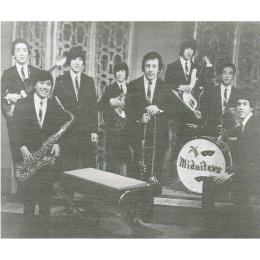 Thee Midniters
Thee Midniters
![]() Dreaming Casually ~ Whittier
Dreaming Casually ~ Whittier
Thee Midniters were probably the most important Chicano band out of the Eastside of Los Angeles in the sixties and seventies but they were by no means the only one. Most of the somewhat fluid membership were alumni of Salesian High School, located on the corner of Whittier Boulevard and Soto Street and had come though a number of neighbourhood groups including the Gentiles where Willie G first cut his teeth vocally. Thee Midniters were the musical focal point for a huge predominantly Hispanic population that loved to dance and perform at venues such as the Big Union Hall in Vernon or the Little Union Hall in the City of Commerce. A comforting and beautiful song that is considered one of theThee Midniters finest ballad moments. The vocal by Willie G is quite beautiful and the sound has nostalgia almost ingrained in the grooves. The whole performance is top class from start to finish guaranteeing the likely use of the replay button.
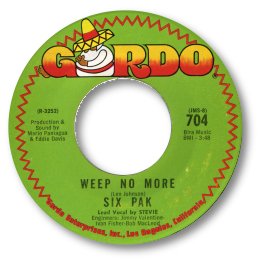 Six Pak
Six Pak
![]() Weep No More ~ Gordo 704
Weep No More ~ Gordo 704
This mournful ballad was first performed by West Coast soul singer Nathan McKinney, but this version may just be the one. Great guitar and organ, fine background vocals and a lead singer who shows real emotion. Great deep! The flip to this "Bring 'Em On Home" is another Vietnam opus.
 Santana
Santana
![]() Everybody’s Everything ~ CBS LP “Santana III”
Everybody’s Everything ~ CBS LP “Santana III”
We all know what a dreadful pain in the ass Carlos Santana’s interminable guitar solos can be. But in 1971 his eponymous band tried their hand at a more soulful sound on their third LP. This high octane mixture of massed percussion and organ bugalu is simply irresistible - the best version of "Karate" by the Emperors ever! The main difference here, of course, from all that self indulgent rubbish though is the presence of the brilliant Tower Of Power horn section. Love those baritone burps! Even Carlos is relatively restrained – thank God.
 M C Blvd
M C Blvd
![]() Queiro Hacerte El Amor ~ Love on The Mind.
Queiro Hacerte El Amor ~ Love on The Mind.
Los Angeles Chicano rapper MC Blvd is a young musician who understands his roots. He sings in a mixture of English and Spanish often switching languages in mid flow. Here he returns to the tradition of the Latin ballad by recreating David Gates ‘Make it With You’ for the twenty first century. He does it in Spanish with a beautiful performance that pays homage to the music of forty years ago.
Louie Ramirez
![]() Latin Rhapsody ~ Fania 733
Latin Rhapsody ~ Fania 733
This is Louie Ramirez making a rare centre stage appearance. His preferred milieu was behind the production desks and his name appears in this capacity on a plethora of recordings from the 60’s to his death in 1993. A salsa track aimed squarely at the dance floor it bears the marks of his idiosyncratic piano and percussionist playing It can be found on the Cotique LP ‘Y Sus Amigo’
A version of this article first appeared in the best soul music magazine in the world “In The Basement” issue #36 and is reproduced here by permission of the editor David Cole.
Acknowledgements:
The Old Barrio Guide To Low Rider Music 1950 to 1975 by Ruben Molina: Mictlan Publishing ISBN 0-9723369-0-7
Barrio Rhythm: Mexican American Music in Los Angeles: Illinois Press ISBN 0-252-06288-4
Down These Mean Streets by Piri Thomas: Vintage Books ISBN 0-679-78142-0
November 2008